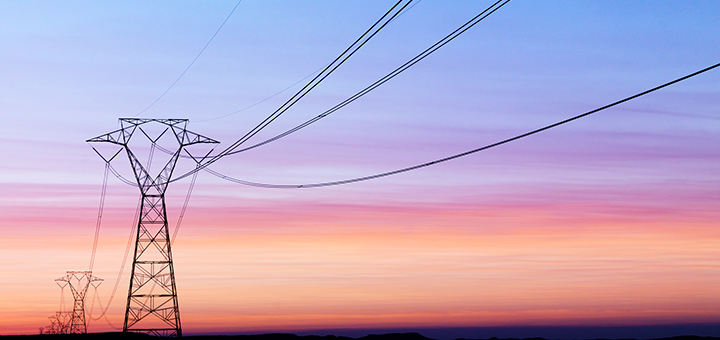Over the last couple of decades, numerous cities within states have introduced deregulated electricity. These changes take electricity markets in these states from regulated to deregulated, which provides several benefits to consumers in those states.
This new type of market seems like it would be well understood, however there is still some confusion — especially for those homes and businesses that have recently relocated from a regulated energy market to a deregulated one.
What exactly does it mean to live in a deregulated market? And more importantly, what is electricity deregulation?
Electricity Regulation vs. Deregulation
It is often helpful to compare two concepts in order to see the differences. To help you better understand what electricity deregulation is, let’s take a moment to compare the industry to energy regulation.
In regulated markets, the utility holds control over the complete energy vertical. What this means is, from start to finish, from the generation of electricity all the way down to the customer’s meter, the utility owns everything.
Electricity deregulation takes some of this ownership away from the utility.
In a deregulated market, the utility controls distribution, maintenance of wires and poles, and invoicing of the consumer for those services. In an electricity deregulated market, companies known as REPs — Retail Electricity Providers — provide the delivery of electricity to the customer (the supply of electricity).
REPs can be called a variety of different things — electric providers, electric companies, energy companies, etc., but regardless of their name their function remains the same. Their business revolves around products and services that involve the supply of electricity to homes and/or businesses in deregulated markets.
Competition in a Deregulated Electricity Market
When the supply of electricity is separated from the utility and given to electricity providers to manage, this automatically creates competition within the market.
How? Well, most areas within the United States only have one to two utilities that provide services to that specific region. There is no competition here because the customer has no electric choice. If the customer needs to sign up for electricity, they must sign up with the only available option — the local utility. Since there is no threat of the customer leaving the utility, there is no incentive for that utility to evolve, offer better customer service, lower rates, etc.
Ultimately, local utilities become a monopoly because there is no competition.
In a deregulated market, if a consumer isn’t happy with their current services, they have the right to look elsewhere and switch supply services at any time. As a result, the power in this type of market shifts. Electricity providers must develop different plans, pricing, products and be as appealing as possible to attract and keep their customers. In addition, it is in the electricity provider’s best interest to keep rates reasonable and fair. Otherwise, the consumer can and will take their services elsewhere.
Facts on Electricity Deregulation
There is so much more to learn about electricity deregulation in the United States. While some elements can be complicated and tricky to summarize, there are many facts that help to break down or expand upon the concept to newcomers:
- The Public Utility Commission (PUC) for every deregulated state helps to monitor and regulate electricity suppliers.
- It doesn’t matter which supplier the consumer chooses, the electricity or energy received remains the same.
- Switching providers doesn’t cause any interruption in service.
- The National Energy Policy Act was approved in 1992. This act marked the beginning of energy deregulation in the United States.
- Billing for electricity in an electricity deregulated market is still managed via one invoice. It includes both delivery and maintenance charges (utility) and supply (electricity provider) service charges.
- In many states, an electricity provider must apply through the Public Utility Commission for approval to sell supply services.
- Making an informed decision as a consumer in an electricity deregulated market will help to save money month to month.
- Contracts between electricity providers are different and depend on the type of services being purchased.
- Many states offer electric choice programs to help consumers better understand their options and electricity deregulation.
States with Deregulated Electricity Markets
There are millions of homes and businesses located in deregulated electricity markets across the US. While the majority of Americans still live in a regulated market, many states have already taken advantage of a deregulated market:
- New York
- New Jersey
- Massachusetts
- Pennsylvania
- Texas
- Ohio
- Maine
- Maryland
- Illinois
- Michigan
- New Hampshire
- Delaware
- Oregon
- Washington D.C.
- Connecticut
Some of the states mentioned above also have a deregulated gas market in addition to electricity. In this industry, the same concept applies because consumers in these markets also have the option to choose their natural gas provider.
In some cases, not all cities or counties within the state give consumers the ability to choose their electricity provider. Texas, for example, supports deregulation in many major cities including Houston and Dallas.
However, in many remote areas the utility maintains control over all elements of the energy market.
Long-Term Effects of Energy Deregulation
A few experts remain locked in debate about whether or not electricity deregulation should be available across the United States. That being said, in states where deregulation has been in place for many years (like Texas and Pennsylvania) the benefits speak for themselves. Some benefits include:
- Greener energies
- Improved energy technologies
- Lower rates
- Additional energy options
- Exceptional customer service
- Economic growth (state and city wide)
Our hope is to see more and more regulated states become deregulated over the coming years so that they too can see the benefits and effects of deregulation.



